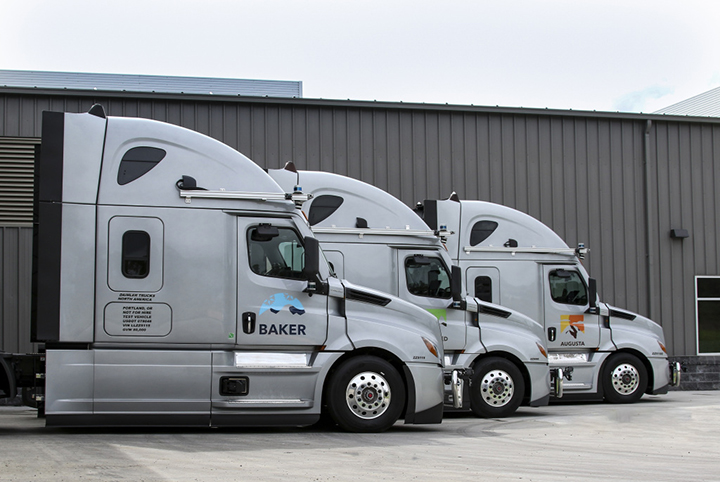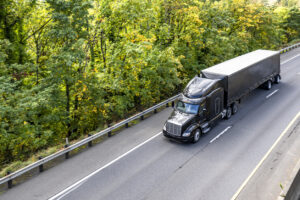BLACKSBURG, Va. — Beginning in early 2021, Torc Robotics plans to implement an enhanced prototype Freightliner Cascadia in its testing of self-driving truck technology in the Southwest. This new generation of Freightliner Cascadia test trucks, developed with Daimler Trucks North America, will help advance Torc’s development of Level 4 self-driving technology.
The test trucks, internally known as ‘Gen 2’ are the second iteration of trucks jointly developed by the two companies, and represent a milestone along the Daimler-Torc journey “of becoming the standard in self-driving trucking and advance their mission of saving lives,” according to a statement released by the two companies. By co-developing a Level 4 Freightliner Cascadia, already equipped with “safety-critical redundancy components,” and integrating additional tech required for self-driving capability, the two companies hope to “reinvent the truck,” the statement continued.
“To meet the redundancy and performance requirements of a self-driving truck, the traditional truck chassis must be reinvented. Just like any major innovation, it requires a stair-step approach toward the final product. We are taking this one step at a time, with safety as our guiding principle,” said Michael Fleming, CEO of Torc.
“We knew from the outset that self-driving technology cannot be commercialized without an OEM. In trucking, there are only a handful of OEMs, and we were fortunate to join the industry leader,” he said.
Torc, which began commercialization of its self-driving technology in heavy-duty applications more than 12 years ago, is leveraging its experience to solve the challenges of autonomous operations, Fleming said. Through the Torc-Daimler partnership, the two companies hope to bring self-driving trucks to market within the decade.
“Our partnership with Torc is critical to our efforts to commercialize a Level 4 highly automated truck,” said Roger Nielsen, president and CEO of Daimler Trucks North America. “Torc’s experience with developing self-driving technology and their focus on safety makes them the ideal partner. Our joint goal is a Level 4 integrated truck that provides true customer value.”
Market-ready self-driving trucks must emulate the actions of the most experienced and safe truck drivers. Torc and Daimler are working to develop software and hardware that can be seamlessly integrated to reliably handle failures of safety-critical vehicle components, such as braking, steering, power distribution and messaging.
The team’s vision for a Level 4 vehicle platform is one in which component redundancies and software behaviors work together. In the case of a brake failure in a Level 4 truck, for example, redundancies would maintain the vehicle’s ability to decelerate and stop without human intervention. Torc’s self-driving software would then be able to maneuver to a safe location so a support crew could service the brake system, according to Fleming. Another integral behavior the team is working to replicate is the way experienced truck drivers are able to feel component failures.
“Our software engineers are working with highly skilled truck drivers to understand this experience and transition this human intuition into embedded sensors and algorithms,” Fleming said.
The upgrades included in the Gen 2 prototype truck are designed to bolster the testing effort and accelerate data collection to assist in machine learning and algorithmic development, the two companies stated. Improved data collection and transfer in the Gen 2 will help the development team expand the truck’s capabilities and allow safe fleet testing. Additional sensor density and coverage will assist in overall high-fidelity perception performance and long-range sensing power, critical for highway driving.
Both companies have stated that they will only deploy self-driving trucks when they are safe and reliable rather by a set date. Fleming said he is convinced the team will meet its goal.
“We are two pioneers joining forces — we understand the complexities of commercializing self-driving technology,” Fleming said. “Our mission is to save lives and our vision is to become the standard in self-driving trucking.”
The Trucker News Staff produces engaging content for not only TheTrucker.com, but also The Trucker Newspaper, which has been serving the trucking industry for more than 30 years. With a focus on drivers, the Trucker News Staff aims to provide relevant, objective content pertaining to the trucking segment of the transportation industry. The Trucker News Staff is based in Little Rock, Arkansas.









Testing planned for ‘next-generation’ Freightliner Cascadia equipped with Level 4 self-driving tech
Comment